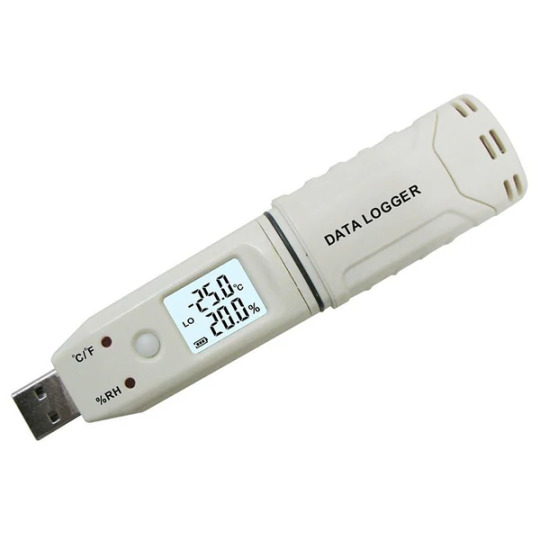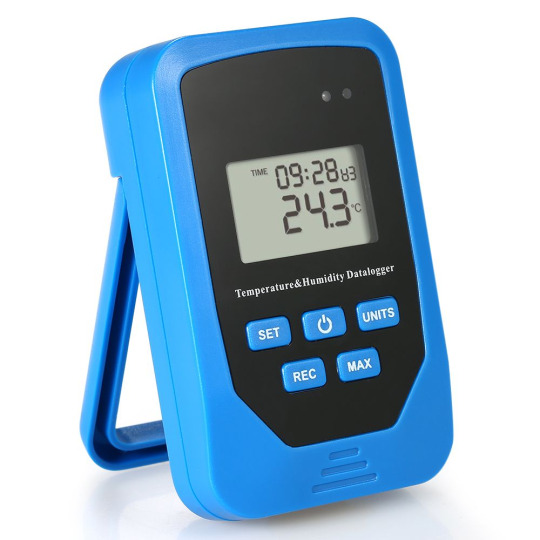#Temperature Data Logger Market
Explore tagged Tumblr posts
Text
Temperature Data Logger Market Insights Technological Advancements Driving Market Growth
The temperature data logger market is witnessing rapid growth due to increased demand for real-time temperature monitoring and enhanced product safety across various industries. These devices play a critical role in ensuring the integrity of temperature-sensitive products, especially in pharmaceuticals, food and beverages, and logistics. As technological advancements continue to shape this sector, the market is evolving to meet the increasing need for precision, efficiency, and regulatory compliance. The global temperature data logger market is expected to expand significantly, driven by advancements in sensor technology, the rise of the Internet of Things (IoT), and the increasing need for traceability in supply chains.

Temperature data loggers are devices that continuously measure and record temperature over time. These devices are used to monitor products in transit or storage, ensuring that they remain within optimal temperature ranges. This technology is vital for maintaining the safety and quality of temperature-sensitive goods, such as pharmaceuticals, vaccines, food, and beverages.
Temperature Data Logger Market Insights: Technological Advancements and Innovations
Technological innovation is a key driver of growth in the temperature data logger market. Recent advancements in sensor technology, connectivity, and cloud computing have enhanced the capabilities of temperature data loggers. Modern loggers feature more accurate sensors, longer battery life, and wireless communication, enabling real-time monitoring and alert systems. These innovations make it easier for industries to ensure compliance with temperature-sensitive product regulations and streamline operations.
Temperature Data Logger Market Insights: The Role of IoT in Temperature Monitoring
The integration of the Internet of Things (IoT) into temperature data loggers is transforming the market. IoT-enabled devices allow for remote temperature monitoring, enabling businesses to access data from anywhere in real time. With cloud-based platforms, companies can track temperature fluctuations, receive alerts, and generate detailed reports, improving operational efficiency and reducing the risk of product spoilage. This shift toward IoT-enabled solutions is expected to drive the market's expansion, particularly in industries requiring constant temperature monitoring, such as pharmaceuticals and food.
Temperature Data Logger Market Insights: Key Industries Driving Growth
Several industries are fueling the demand for temperature data loggers. The pharmaceutical sector is one of the biggest contributors, as it requires strict temperature control for the storage and transportation of drugs, particularly biologics and vaccines. The food and beverage industry also drives growth, as temperature monitoring is crucial to ensure food safety and prevent spoilage. Additionally, the logistics and transportation sectors require temperature data loggers to monitor shipments, especially for perishable goods. The increasing focus on cold chain logistics is expected to further propel the market.
Temperature Data Logger Market Insights: Wireless Solutions Gaining Popularity
Wireless temperature data loggers are becoming increasingly popular due to their ease of use and ability to connect to cloud platforms. Unlike traditional wired systems, wireless loggers do not require physical connections, making them more flexible and scalable. These devices can be deployed across large storage facilities or transportation networks, enabling companies to monitor temperatures remotely and receive instant alerts when temperature thresholds are exceeded. As wireless solutions continue to evolve, they are expected to play a pivotal role in the growth of the market.
Temperature Data Logger Market Insights: Expanding Adoption in Emerging Markets
As industries in emerging economies continue to grow, the adoption of temperature data loggers is expanding. Countries in regions like Asia-Pacific, Latin America, and the Middle East are witnessing increased demand for temperature monitoring solutions, driven by growing pharmaceutical, food, and logistics sectors. Emerging markets are experiencing significant investments in cold chain logistics, healthcare infrastructure, and regulatory compliance, further fueling the adoption of temperature data loggers. This trend is expected to create new opportunities for market players in these regions.
Temperature Data Logger Market Insights: Regulatory Compliance and Industry Standards
Regulatory compliance plays a crucial role in driving the temperature data logger market. In industries like pharmaceuticals and food, stringent regulations require companies to ensure that products are stored and transported under the correct temperature conditions. Non-compliance can lead to product spoilage, safety risks, and legal consequences. As regulations continue to tighten globally, temperature data loggers are becoming essential tools for ensuring compliance and meeting industry standards. This focus on regulatory compliance will continue to influence market growth.
Temperature Data Logger Market Insights: Challenges and Barriers to Adoption
Despite the promising growth of the temperature data logger market, several challenges remain. High initial costs, particularly for advanced temperature monitoring systems, may deter small and medium-sized enterprises (SMEs) from adopting these solutions. Additionally, limited access to reliable internet connectivity in remote areas may hinder the use of IoT-enabled devices in some regions. Companies will need to address these barriers to adoption in order to unlock the full potential of the market.
Temperature Data Logger Market Insights: Advancements in Sensor Accuracy
Improved sensor accuracy is a key trend in the temperature data logger market. Modern temperature data loggers are equipped with high-precision sensors that provide real-time and accurate temperature measurements. This accuracy is particularly important in industries such as pharmaceuticals, where even small temperature fluctuations can compromise product quality. Advancements in sensor technology are expected to drive further innovation in the market, improving the reliability and performance of temperature monitoring systems.
Temperature Data Logger Market Insights: Future Outlook and Market Projections
The future of the temperature data logger market looks promising, with strong growth projected across various industries. As technology continues to improve, the demand for more sophisticated temperature monitoring solutions will rise. The adoption of IoT-enabled devices, wireless solutions, and cloud-based platforms will continue to shape the market, providing businesses with more efficient, cost-effective ways to ensure the safety and quality of their products. With increasing regulatory pressure and the need for enhanced supply chain visibility, the temperature data logger market is poised for continued expansion.
Conclusion
The temperature data logger market is evolving rapidly, driven by technological innovations, increasing demand for real-time temperature monitoring, and the need for regulatory compliance across various industries. As advancements in sensor technology, IoT integration, and wireless solutions continue to reshape the market, businesses in sectors such as pharmaceuticals, food, and logistics are increasingly adopting temperature data loggers to ensure product safety and quality. While challenges such as high costs and limited connectivity persist, the market's growth prospects remain strong, with significant opportunities for innovation and expansion in emerging markets.
#Temperature Data Logger Market#Temperature Data Logger Market trends#Temperature Data Logger#Temperature Data Logger measures#Temperature Data#Temperature
0 notes
Text
Smart Features in Temperature Data Loggers Enhancing Market Potential
The temperature data logger market is experiencing substantial growth as industries seek precise and efficient solutions for monitoring temperature-sensitive products. These devices are essential for ensuring product quality, safety, and compliance with industry regulations. With advancements in technology, temperature data loggers now offer real-time data collection, wireless communication, and integration with IoT platforms.

Advancements in Temperature Data Logger Technology
One of the key drivers of the temperature data logger market is the integration of advanced technologies such as IoT (Internet of Things). This enables real-time monitoring and seamless data transfer across multiple devices and platforms. Smart temperature data loggers offer features like remote access, automated alerts, and predictive analytics, making them indispensable for industries such as pharmaceuticals, food & beverages, and logistics.
Key Drivers Influencing the Temperature Data Logger Market
Increased Regulatory Compliance As industries face stricter regulations regarding the storage and transportation of temperature-sensitive products, the demand for accurate data loggers has risen. These devices ensure compliance with industry standards, particularly in pharmaceuticals and food safety.
Growth of Wireless and IoT-enabled Solutions Wireless temperature data loggers are becoming increasingly popular due to their ease of use and ability to provide real-time data without physical connections. The adoption of IoT technologies allows seamless data integration with other smart systems, improving operational efficiency.
Sustainability and Energy Efficiency Companies are focusing on sustainable solutions, driving the development of energy-efficient temperature data loggers. These devices reduce power consumption while maintaining high precision, catering to eco-conscious industries.
Cost-Efficiency and Accessibility With advancements in technology, temperature data loggers have become more cost-effective and accessible to businesses of all sizes. Small and medium enterprises (SMEs) are increasingly adopting these devices to ensure quality control without heavy investments.
Smart Features Enhancing Data Security Security remains a top priority for temperature data loggers, especially with sensitive data being stored and transmitted. Advanced security features such as encryption and secure wireless communication protocols are being integrated to protect against cyber threats.
Market Challenges and Opportunities
While the market for temperature data loggers is expanding rapidly, challenges such as data privacy concerns and varying regional regulations persist. However, opportunities lie in the development of more specialized solutions for industries like biotechnology, where high precision and reliability are critical.
Conclusion
The temperature data logger market is evolving at a rapid pace, driven by advancements in technology and increasing demand for accurate monitoring of temperature-sensitive products. From wireless IoT solutions to energy-efficient devices, these innovations are reshaping how industries manage their temperature data, ensuring product integrity and safety across various sectors.
#Temperature Data Logger Market#Temperature Data Logger Market trends#Temperature Data Logger#Temperature Data Logger measurements#Temperature Data giver#Data Logger Market
0 notes